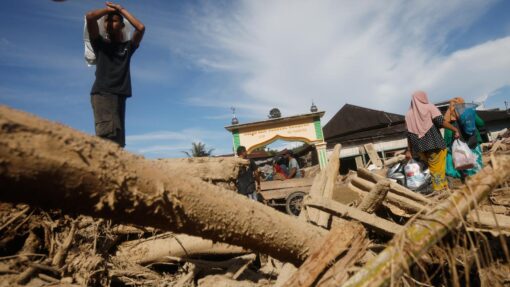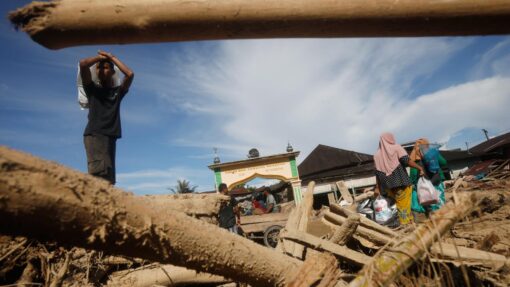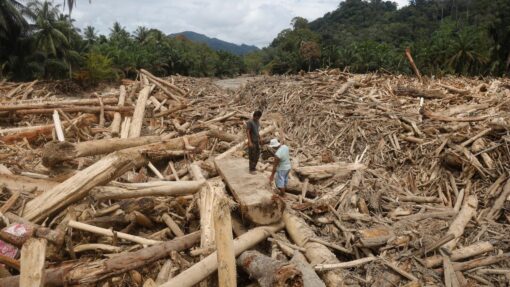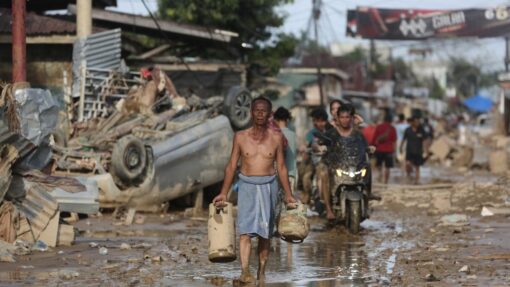Flood damage heartbreak as army called in for clean-up
Jack Gramenz and Farid Farid |

People have been picking up their muddied possessions and surveying damage from “heartbreaking” floods, as troops are deployed to help with the massive clean-up.
The number of homes deemed uninhabitable from the NSW mid-north coast floods rose to 400 on Monday, with 12,000 residents in multiple towns isolated.
State MP Michael Kemp said it was tough touring ravaged regions and seeing “people’s livelihoods on the side of the kerb”.
The after-effects of the floods that killed five people were “heartbreaking”, NSW Reconstruction Authority chief executive Mal Lanyon said.
“To see people’s possessions on sidewalks, to see the impact on dairy cattle, to see the impact right across this region is really difficult,” he said.
“But what it does do is steel us to stand alongside the community to make sure we provide support.”
Prime Minister Anthony Albanese said 70 Australian Defence Force personnel would be dispatched from Tuesday to help with recovery and clean-up efforts.
“The presence of ADF personnel on the ground brings enormous confidence to communities that are really doing it tough,” he told reporters on Monday.
“It’s a sign of how seriously we, as a nation, are taking what is a catastrophic event.”

Another 100 people, mostly veterans, from non-government group Disaster Relief Australia, and volunteers from grassroots groups will bolster support on the ground.
Artist and gallery owner Nadia Zarb moved to Taree four years ago and said she did not know how she could have coped with her second flood in that time if not for community support.
“I’m actually not too bad … because I’ve had the help,” she told AAP.
“We’ve got the best community, we’ve got the support around us and I couldn’t ask for anything more.”
More than 3500 damage assessments have been completed, resulting in 400 homes deemed uninhabitable around Taree, Wingham and Glenthorne.
The figure is expected to rise sharply as damage to an estimated 10,000 properties across the Hunter and mid-north coast regions of NSW is evaluated.
Those who have lost income in the four worst-affected areas can apply via myGov for support equivalent to JobSeeker for up to 13 weeks.

Primary producers are eligible for freight subsidies to help transport livestock and fodder.
It is part of joint federal-state natural disaster recovery arrangements activated for 19 local government areas, including small loans for business.
Despite floodwaters receding, rescuers face challenging conditions.
In one case, they had to paddle two hours to reach two people and their working dogs who has been stranded for three days on a remote farm near Kempsey.
The crew ripped down a bamboo fence and crafted a makeshift raft to tow them to safety, with the spotlight from a drone guiding them as night fell, Fire and Rescue NSW said.
Heavy-lifting drones have been used to drop hay to isolated farms and for aerial welfare checks at properties.

Using bulk water carriers, firefighters have been moving 250,000 litres an hour from Kempsey’s town centre back into the Macleay River.
Insurers have received more than 3500 claims so far, 80 per cent of which are personal property claims.
Flood-affected residents are being asked to be patient and await advice from the SES before returning to their properties.
The state government is opening five recovery centres in flood-impacted areas from Tuesday, offering a range of support services to affected residents.
But communities could face a new weather threat in coming days.
A cold front with strong winds of 60 to 80km/h due on Monday and Tuesday could hamper recovery efforts, cause damage and bring down trees, the Bureau of Meteorology has warned.
AAP


